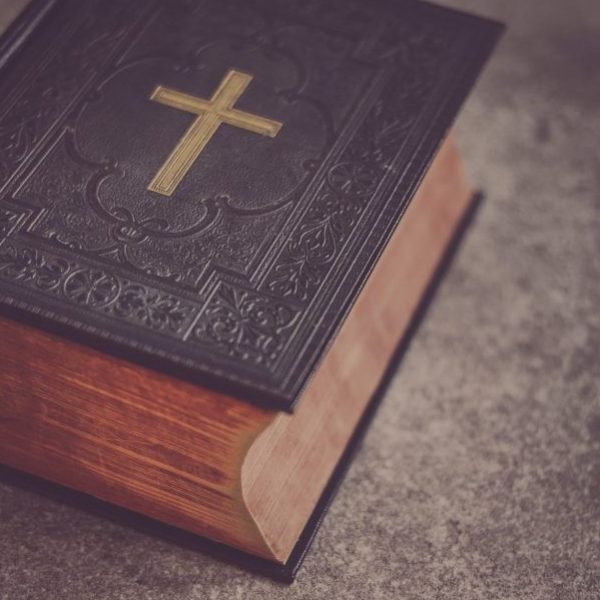Francis Bremer on John Davenport and Puritanism at the Founding of New Haven

Francis Bremer – credit Keegan L. Bremer
Francis J. Bremer, author of the recently published biography, Building a New Jerusalem: John Davenport, a Puritan in Three Worlds, discusses the fervent Puritan world of religious politics that led to the founding of the New Haven Colony, as today we celebrate John Davenport’s 416th birthday, and the 375th anniversary of New Haven for the month of April!
Francis J. Bremer—
Power to the People: The Heart of Puritanism
When I was working on Building the New Jerusalem: John Davenport, A Puritan in Three Worlds I sought to describe how individuals became members of the church in New Haven. I assumed, as I had for years, that individuals had to demonstrate that they were indeed members of God’s elect through a narration of their spiritual conversion before the existing membership of the church. Ever since Edmund Morgan had described this test in Visible Saints: A History of a Puritan Idea virtually all students of New England history accepted this sort of test as a universal New England requirement for achieving church membership. I had described it as such in written works and in countless lectures to undergraduates. Thus I was surprised to find that there is no evidence that such a test was required in John Davenport’s New Haven. I began to look into the question of whether it was required in more than the three colonial churches where we have actual evidence of some such conversion narratives being offered by lay applicants. If such a personal account was required to establish oneself as a “saint” why did the overwhelming majority of seventeenth century colonial clergy fail to provide models by offering accounts of how they had been saved? Indeed, we have no idea of the process of conversion as experienced by famous clergy such as John Davenport, Thomas Hooker, and John Cotton.
I am investigating the purpose of such lay conversion narratives for my next book, and while that will deal with the use of such accounts in securing membership in some churches, I am more interested in the broader, evangelical purposes they served in England, Ireland, and America in the age of the puritans. What follows here is a stronger, less modulated, argument than I will probably end up putting forth. I do so to prompt discussion that will hopefully advance my understanding of the subject.
As we reflect this month on what we have to be thankful for in the puritan heritage, I would like to suggest that we focus on the role that lay men and women played in the evolution of that faith in particular and New England institutions in general. Because that faith became institutionalized and its history written from the records provided by clerical leaders, the role of ordinary believers has been neglected.
 From the earliest days of Christianity one of the key issues that engaged believers was the nature of authority in the church. Looking back it is easy to suggest that the triumph of the church officials who decided that which scriptures were authoritative, that those writings were the revealed word of God, and that their meaning was to be determined by a hierarchy of trained clergy was inevitable. But this narrative ignores the persistent if sometimes marginal position of those who argued that the best understanding of God’s will came from the hearts of those whose perception had been enlightened by the presence of the Spirit in their souls. From the Gnostics who were denounced as heretics by early church fathers through Luther’s assertion that believers did not need papal, episcopal, or any clerical guidance to understand the word of God, there was a strain in Christianity that emphasized the fact that the inspiration of the Spirit rather than authoritative books or individuals could lead ordinary people to the essence of the faith.
From the earliest days of Christianity one of the key issues that engaged believers was the nature of authority in the church. Looking back it is easy to suggest that the triumph of the church officials who decided that which scriptures were authoritative, that those writings were the revealed word of God, and that their meaning was to be determined by a hierarchy of trained clergy was inevitable. But this narrative ignores the persistent if sometimes marginal position of those who argued that the best understanding of God’s will came from the hearts of those whose perception had been enlightened by the presence of the Spirit in their souls. From the Gnostics who were denounced as heretics by early church fathers through Luther’s assertion that believers did not need papal, episcopal, or any clerical guidance to understand the word of God, there was a strain in Christianity that emphasized the fact that the inspiration of the Spirit rather than authoritative books or individuals could lead ordinary people to the essence of the faith.
In sixteenth-century England, with the head of the Church opposed to the reforms that puritans believed were demanded by God, the issue for the godly was how that path was to be determined. The puritan agenda was crafted from the bottom up, by individual clergymen but also lay men (and yes, women) relying on the guidance of the Spirit to discern the proper meaning of Scripture. They shared their understanding with one another in prophesyings (exercises in which clergy shared their readings of scriptural passages and responded at times to questions from a lay audience), in clerical conferences of regional clergy in places such as the Stour Valley where John Winthrop lived, and in meetings of local believers where an individual such as Brigit Cooke in Kersey or Anne Hutchinson in Alford would open their home to other seekers after truth for discussions of their religious experiences and beliefs. John Winthrop met with a group of lay and clerical friends in the Groton area to support each other through prayer and discussion in their search to make themselves better Christians.
In some localities the combination of a godly minister and a puritan laity enabled the reform of a parish in defiance of hierarchical demands. Elsewhere, such as in Scrooby, lay men and women found a sympathetic but unbeneficed clergyman to lead them in worship outside the structure of the national church, and were denounced as Separatists. Paralleling this practice, in the Netherlands and then in New England, other believers (while asserting continued communion with the Church of England) organized their own churches, composed and swore to covenants that bound them together as a church, and only then chose as their pastors men who combined formal education with evidence the sainthood. Lay members not only elected their officers, but voted on further admissions to the congregation and had the final say on any change in practices. In cases where a gathering of believers had not yet been able to secure an acceptable minister, lay men often preached – as John Winthrop and others did in Boston between the departure of John Wilson on a visit to England and the arrival of John Cotton. And within all these churches it was customary in the early days of New England for lay men and women in open church to ask clergy for clarification of points raised in sermons, and to offer their own insights.
Congregationalism stood in opposition to Presbyterian models not only in asserting the independence of the individual congregation from hierarchical authority (bishops or synods), but also in opposition to any effort by clerical officers to claim power within an individual congregation. New England lay puritans were, as historian Jeff Cooper has stated, “tenacious of their liberties.” It is not surprising that the First Church of Boston was suspicious of any regional assemblies or synods of church representatives in the 1630s and 1640s, and that an individual such as Roger Williams warned that such meetings threatened the autonomy of individual congregations and the authority of laymen within them.
Some of this is familiar, but what has been less commonly written about is that even when they had formed their own reformed churches, lay men and women in New England continued to meet outside of the church to reinforce each other’s faith and understanding. Such gatherings were important because most puritans did not believe that they had all the answers to matters of faith. John Winthrop, in his famous “Christian Charity” sermon to those joining him in the migration of 1630 talked about how, if the colonists did their best to live as God wished them to, God would reward them with further light than they had yet received. The search for such further light was the key element in private meetings where men and women shared the insights they believe they had received from the Spirit. The meetings in which Anne Hutchinson discussed sermons and scripture in her home are famous for being the presumed source of the challenge to Massachusetts orthodoxy that led to her excommunication and banishment. But those meetings existed and were viewed by Winthrop and others as serving a valuable function in the community for many months before the Newtown clergyman Thomas Shepard first charged that they were the source of dangerous opinions.
When the New Haven Colony was founded in 1638 the frame of government was established by the vote of all those who had settled along the mouth of the Quinnipiac River. A church covenant was developed by individuals chosen in neighborhood meetings where ordinary people identified who among them was best suited to be a pillar of the church. Then the lay believers who constituted the church chose John Davenport as their pastor. Every Tuesday, members of the congregation met informally to confer and discuss various religious matters. We have a detailed description of such a debate in New Haven in which Ezekiel Cheever and other laymen explored how the requirement of two witnesses to an offense should be interpreted.
Such gatherings probably involved sharing religious experiences. I have argued in Building a New Jerusalem that the notion that approved narratives of personal conversion were required for membership in all New England churches is inaccurate. We have at most evidence of such a membership requirement in at most five churches throughout the region! But such accounts were encouraged in informal as well as church settings for pother purposes — not to allow others to pass judgment on the supposed saint, but to allow other believers to learn from the spiritual experienced of others. It was a way in which lay men and women could teach others and help their friends on the path to godliness.
Trust in the faith and judgment of the individual was the foundation of Congregationalism. That same faith underlay the empowerment of ordinary citizens in governing themselves on the town and colony level. It was because they were willing to extend power to those citizens that they required all children — male and female, servant as well as free – to be educated to read the Bible and the colony laws. Participatory democracy in New England was the consequence of recognizing that all men and women had a role to play in determining God’s truth.
Over time, New England’s clergy sought to curb lay participation in the shaping of faith. Harvard trained ministers saw the challenge posed by Anne Hutchinson, the Baptist prioritization of saving experience over theological training, the Quaker assertion of the centrality of the Inner Light and similar challenges as a consequence of allowing too much freedom to the laity. Clerical conferences gradually established greater authority over individual congregations. The university trained clergy assumed more power over those in the pews, emphasizing that the formal training they had received was necessary to unlock the meaning of Scripture. As is always the case, the winners write history, and most stories of puritanism have consequently downplayed the vital role that the laity played in the shaping of that faith and its institutions in Old and New England. It is time to look a the story afresh, recover, and be thankful for the importance of the ordinary men and women who came to America with John Winthrop and their role in shaping what they hoped to be a City Upon a Hill.
Francis J. Bremer is the author of over a dozen works on colonial history, most recently First Founders: American Puritans and Puritanism in an Atlantic World (University Presses of New England, 2012). His Building a New Jerusalem: John Davenport, a Puritan in Three Worlds is now available from Yale University Press.




